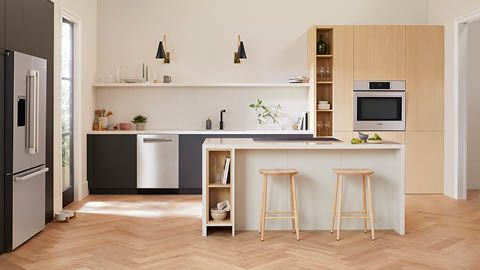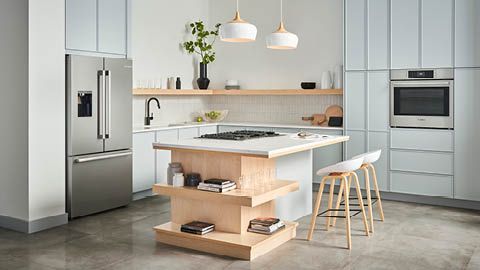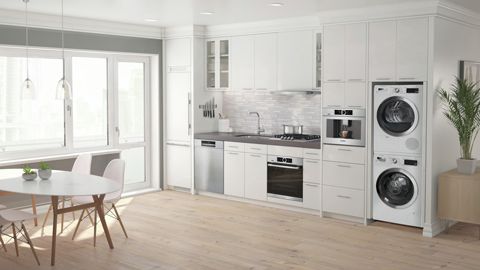written by Dan Brunn
It’s official: The small space movement has taken the Nation by storm. What started as a practical, space-saving design and architecture concept has now seen a resurgence as homeowners become increasingly more aware of the space they inhabit. And while many once thought bigger was most definitely better, the benefits of living in a smaller space stretch far beyond simply decreasing your home’s footprint.
While some might call it a trend, I firmly believe that small space living is a full-fledged movement, and one that is here to stay—here’s why.
The Case for Small Space Living
If you’re still asking yourself, “why small spaces?” you’re not alone. As an architect, I’m often asked with explaining why this movement has become so popular. In reality, small space design is not a trend, but rather a movement that grew its roots in Europe and Asia, where cities are built on a scale much more compact than we’re used to seeing in the United States.

And while the U.S. has seen several decades of large-scale architecture, we’re now seeing an increased demand for a more compact and purposeful style of living. Why? While real estate and the increased cost of space is one factor, I think that people have become more aware of their own space, realizing that in some cases, a smaller, ergonomically sized space makes more sense for their daily life.
Today, small-space living is being embraced not just by city-dwellers or downsizing empty-nesters, but by families of all sizes. More and more, these homeowners are beginning to understand that they can enjoy all the amenities they expect of a “full sized” habitat, without compromising on their quality of life. When it comes to building out the details of these homes, manufacturers are also taking note. With small space products that encompass everything from 18”and 24” dishwashers, cooktops, ovens, refrigerators, ventilation to compact laundry pairs, the possibilities are endless.
Timeless Design: The Secret to Small Space Success
When it comes to small space design, I strongly believe that “less is more.” As the size of a space gets smaller, the design must become more precise and more efficient. It’s what we call purposeful design—a tenant of the Bauhaus movement, and an absolute necessity for creating a successful small space.
The principle is simple: create a design where function guides form, leaving no room for wasted space. In smaller homes, this becomes critically important, as there is less room to spare. Therefore, each element must serve a purpose, providing a flexible and ergonomically comfortable environment for the homeowner.
The Kitchen: The Heart of the (Small Space) Home
It is often said that a potential homeowner will base his or her buying decision on the kitchen. Although people often look for open-concept spaces, a functional kitchen is often too good to pass up. Unsurprisingly, the criteria remains the same when it comes to a small scale kitchen.
No matter the size of the home, most of us see our kitchens as a space not only to store our food and cook meals, but as a place to gather, and spend time with loved ones. In a small scale home, it is important to design the kitchen as an extension of the home. This means not only creating cleaner lines, and incorporating well thought out cabinetry design, but also choosing the right appliances for the space.
When designing for a small space kitchen, it’s important to understand that an oversized set of appliances will not only throw off the scale of a home, but also reduce the function of the kitchen, making it feel uncomfortable. I always look to incorporate appliances designed for small spaces, like the Bosch 24”Glass Door Refrigerator, that is equally as beautiful as it is functional. In the end, this kitchen functions not only as the utilitarian object homeowners expect, but also as the gathering place for people to relax, connect and converse.
So, what do you think of the small space movement?
Dan Brunn is a brand partner for Bosch home appliances. For more information on the award-winning architect, visit www.danbrunn.com.












